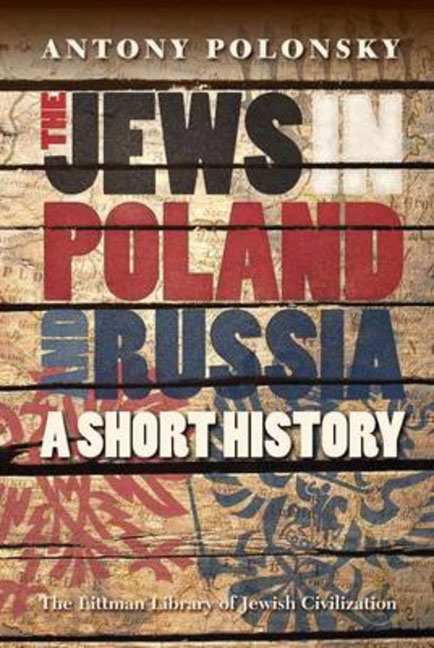Book contents
- Frontmatter
- Dedication
- Preface
- Acknowledgements
- Contents
- List of Maps
- Note on Transliteration
- Note on Place Names
- Maps
- Introduction
- 1 The Polish–Lithuanian Background
- 2 Attempts to Transform and Integrate the Jews, 1750–1881
- 3 The New Jewish Politics, 1881–1914
- 4 Social and Religious Change, 1750–1914
- 5 The First World War and its Aftermath
- 6 The Jews in Poland between the Two World Wars
- 7 Jews in Lithuania between the Two World Wars
- 8 Jews in Soviet Russia and the Soviet Union, 1921–1941
- 9 War and Genocide, 1939–1945
- 10 From the End of the Second World War to the Collapse of the Communist System
- 11 Jews in Eastern Europe and Russia since the End of Communism
- Conclusion
- Postword
- Glossary
- Notes
- Bibliography
- Index
1 - The Polish–Lithuanian Background
- Frontmatter
- Dedication
- Preface
- Acknowledgements
- Contents
- List of Maps
- Note on Transliteration
- Note on Place Names
- Maps
- Introduction
- 1 The Polish–Lithuanian Background
- 2 Attempts to Transform and Integrate the Jews, 1750–1881
- 3 The New Jewish Politics, 1881–1914
- 4 Social and Religious Change, 1750–1914
- 5 The First World War and its Aftermath
- 6 The Jews in Poland between the Two World Wars
- 7 Jews in Lithuania between the Two World Wars
- 8 Jews in Soviet Russia and the Soviet Union, 1921–1941
- 9 War and Genocide, 1939–1945
- 10 From the End of the Second World War to the Collapse of the Communist System
- 11 Jews in Eastern Europe and Russia since the End of Communism
- Conclusion
- Postword
- Glossary
- Notes
- Bibliography
- Index
Summary
THE EMERGENCE OF THE JEWISH COMMUNITY OF POLAND–LITHUANIA
By the middle of the seventeenth century the Jewish community of Poland– Lithuania was the largest in the world, the result of the establishment of a new geography of the Jewish world that had started at the end of the thirteenth century. This was primarily a consequence of the worsening situation of the Jews in the countries of western and central Europe, which led to their being driven out of England in 1290, their partial expulsion from France in 1306 and their total expulsion from the lands of the French monarch in 1394, their banishment from many German states and cities in the fifteenth and early sixteenth centuries and finally from Spain and the Spanish possessions in Italy between 1492 and 1510, and the forced conversion of the Jews in Portugal. At the same time new opportunities opened up for Jews in the Kingdom of Poland and the Grand Duchy of Lithuania.
Where did the Jews of Poland–Lithuania come from, and what accounts for the rapid expansion of the community there? Although some historians have exaggerated the degree to which the communities established in Poland and Lithuania had their roots in eastern (Palestinian, Byzantine, or Persian) Jewry, there seems little doubt that individual Jews from these countries did settle in Poland and in the Grand Duchy of Lithuania from the tenth century on. Some came from the Khazar empire on the lower Volga, whose rulers and aristocracy are alleged by some sources to have converted to Judaism in the eighth century. Kiev, on the main trade route through northern Europe from Spain to Byzantium and the Muslim caliphate, was also the home of a number of Jews. Certainly the Jewish presence in Kiev is well documented from the tenth century, when the Kievan Letter was written, a letter of introduction by the local Khazarian Jewish community on behalf of one of its members, which was discovered in the Cairo Genizah documents. There were also Jewish communities at this stage in Volhynia, but they were for the most part small and isolated.
- Type
- Chapter
- Information
- The Jews in Poland and Russia: A Short History , pp. 3 - 39Publisher: Liverpool University PressPrint publication year: 2013

